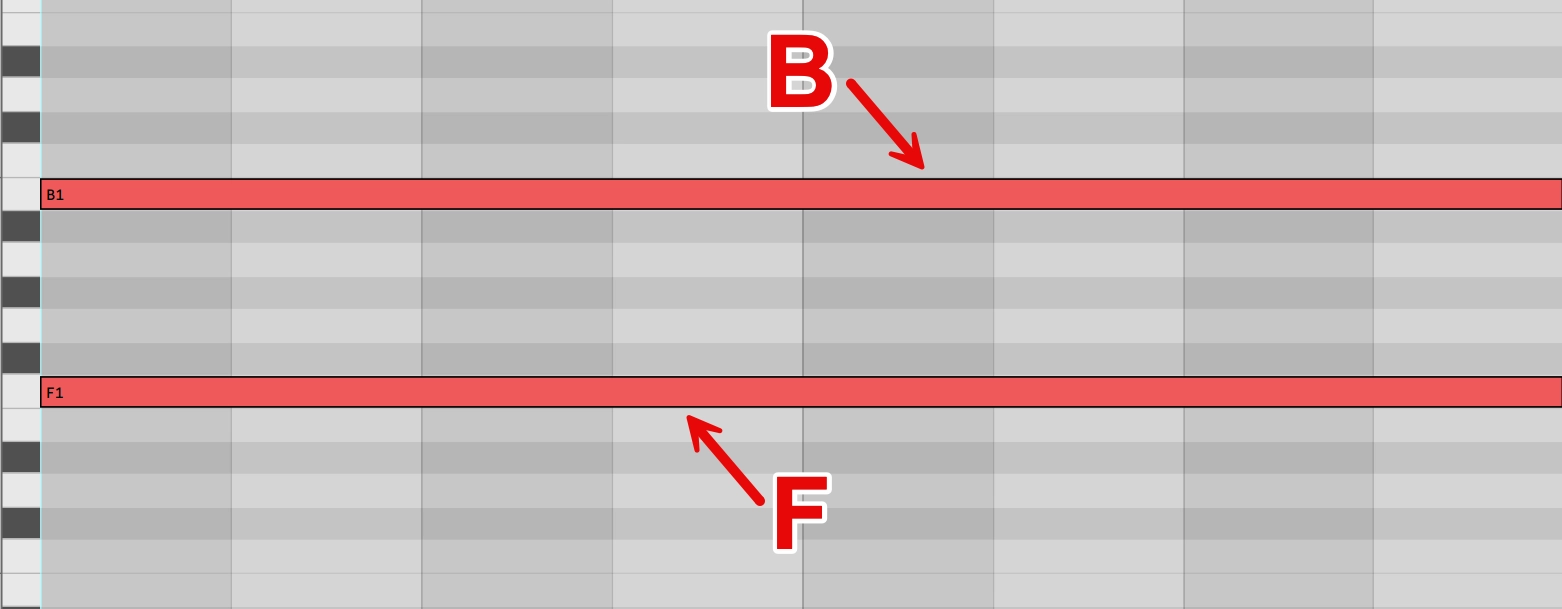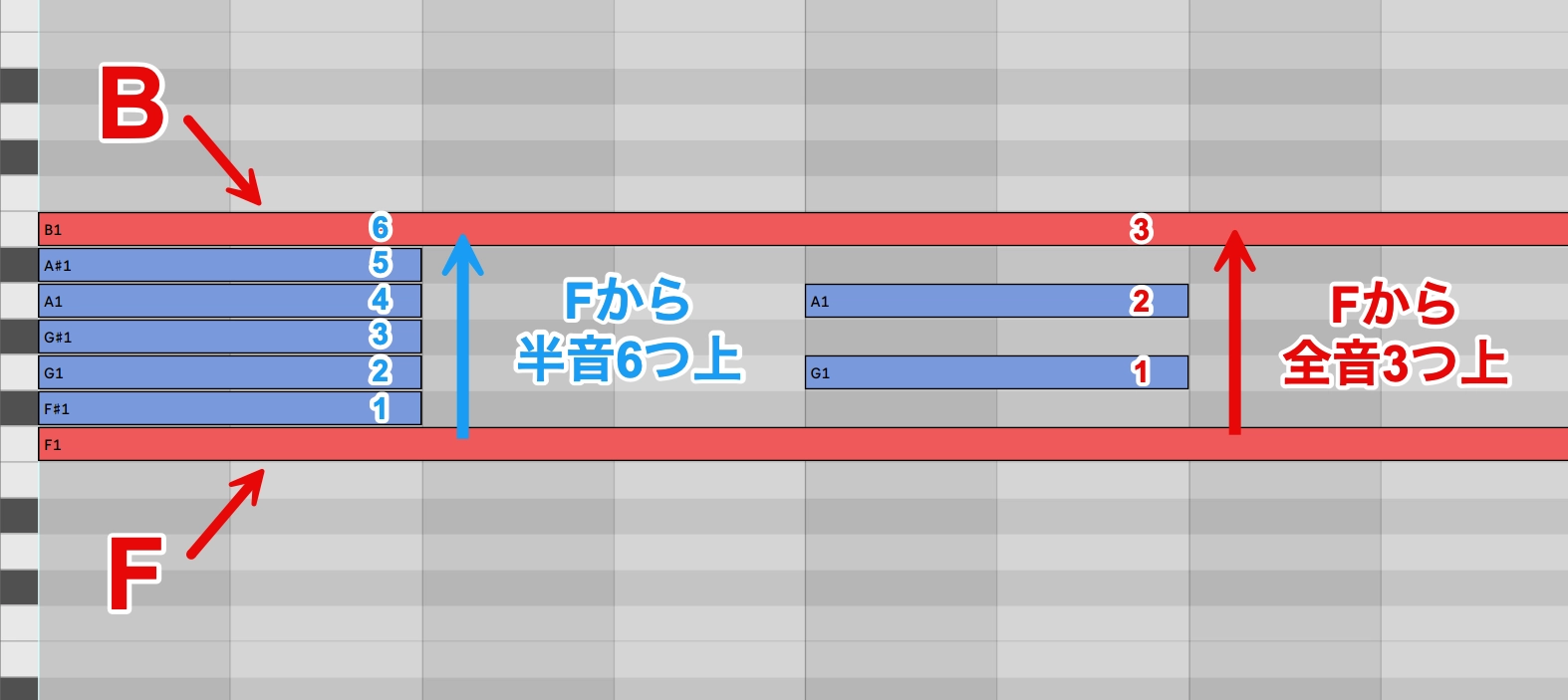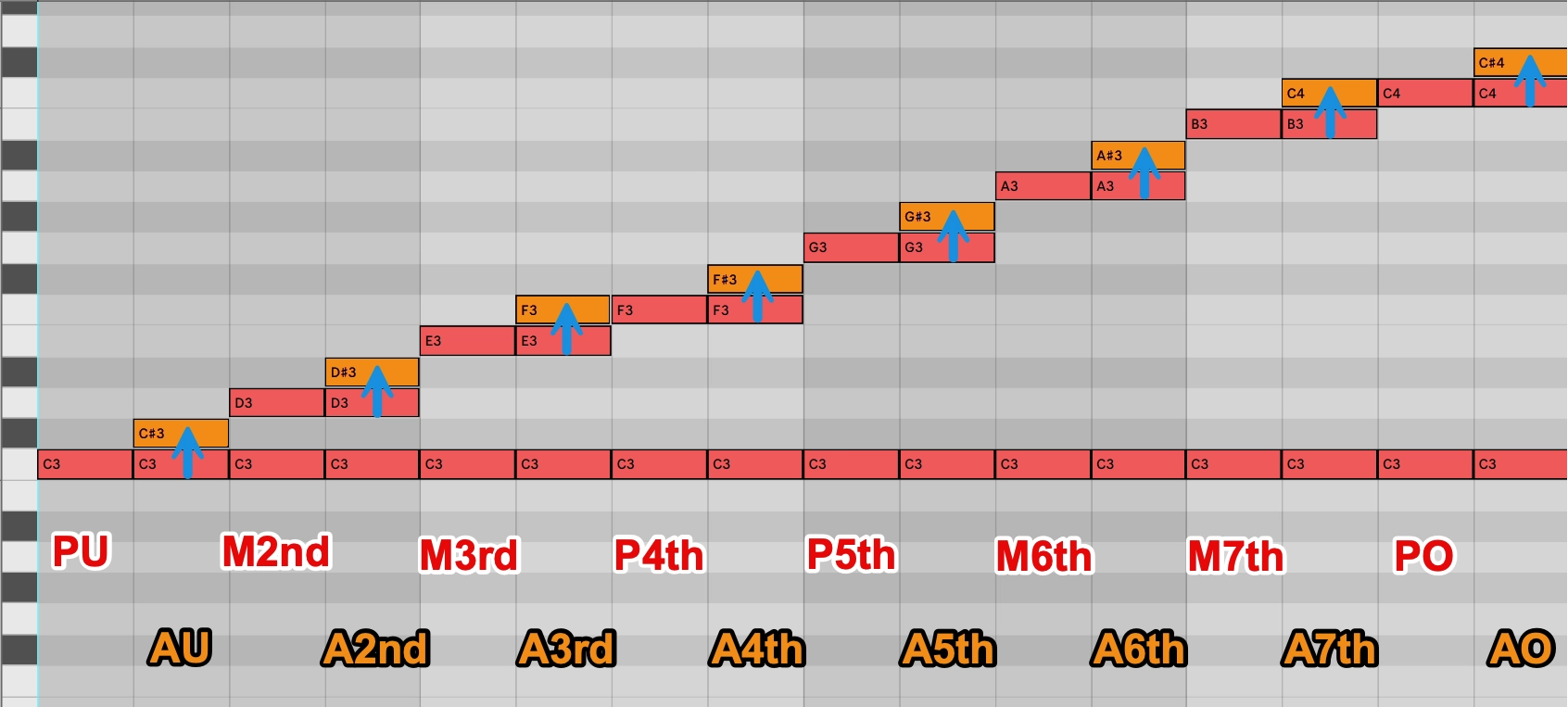三全音「トライトーン」と新たなインターバル「オーグメント」/音楽理論講座
トライトーンと新たなインターバルのオーグメント

今回は、一旦コードをお休みし「トライトーン(トリトン)」と、それに関連して新たなインターバル「オーグメント」について学んでいきましょう。
重要な意味を持つトライトーン
トライトーンは、日本語に訳すと「三全音」という呼び名になります。
まずはどのようなサウンドなのか聴いてみましょう。
一度、インターバルで登場していますね。
非常に緊張感があるサウンドで、連続して聞かされると急かされている気さえします。
遥か昔、「悪魔の音程」とも呼ばれていたそうです。
実は、トライトーンは音楽制作の上で非常に重要なサウンドです。
先ほどのサウンドを譜面とピアノロールでそれぞれ確認してみましょう。
ここで、名前に注目してみます。
- “トライ”トーン (”Tri”は”3″を表す接頭辞)
- “三”全音
この”3″が重要そうですね。
そうです。2つ音の差が全音3つ分ということです。
先ほどのFとBの間に注目してみましょう。
逆もまた同じですね。
新たなインターバル オーグメント
ここで新しいインターバル「オーグメント」の登場です。
英語表記では”Augmented”ですが、日本では「オーグメント」「オーギュメント」「オーグメンテッド」といった様々な呼ばれ方をします。
ちなみに、純日本語表記だと「増〜度」となります。
考え方は非常にシンプルです。
メジャーとパーフェクトのインターバルについてさらに半音分差を広げると、オーグメントになります。
オーグメントの表記
パーフェクトは”P”、メジャーは”M”、マイナーは”m”、ディミニッシュは”dim”と表記したように、一般的にオーグメント・インターバルは”A”と表記します。
それぞれの名称は、以下の通りです。
- AU = Augmented Unison (オーグメント・ユニゾン)
- A2nd = Augmented 2nd(オーグメント・セカンド)
- A3rd = Augmented 3rd(オーグメント・サード)
- A4th = Augmented 4th(オーグメント・フォース)
- A5th = Augmented 5th(オーグメント・フィフス)
- A6th = Augmented 6th(オーグメント・シックスス)
- A7th = Augmented 7th(オーグメント・セブンス)
- AO = Augmented Octave(オーグメント・オクターブ)
この中に、1つトライトーンが含まれているのがお分かりでしょうか?
そう、A4thですね。
Cを起点とした場合、CとF#の音程です。
ちなみに、この音程はディミニッシュ・インターバルだと「Dim5th」となります。
トライトーンの重要性
最後に、このトライトーンがなぜ音楽的に重要なのかについて、1つのサンプルを聴いてください。
これはトライトーンからある音に移動したものです。
なんだかとても終始感を得ることができるサウンドですね。
緊張から一気に解放されたような感覚です。
この理由については、次回以降で詳しく触れていきますので、頭の片隅に置いておいて下さい。























